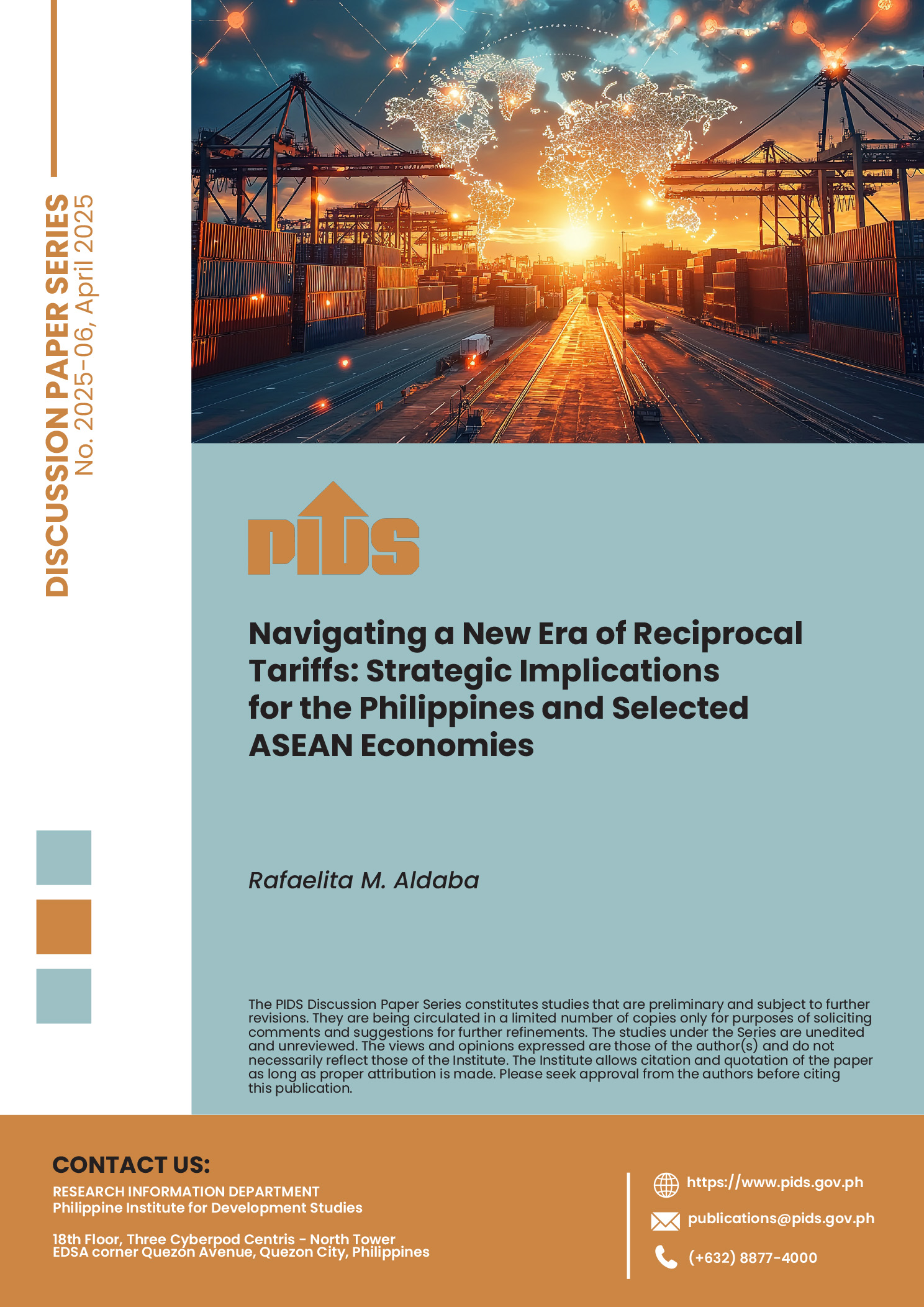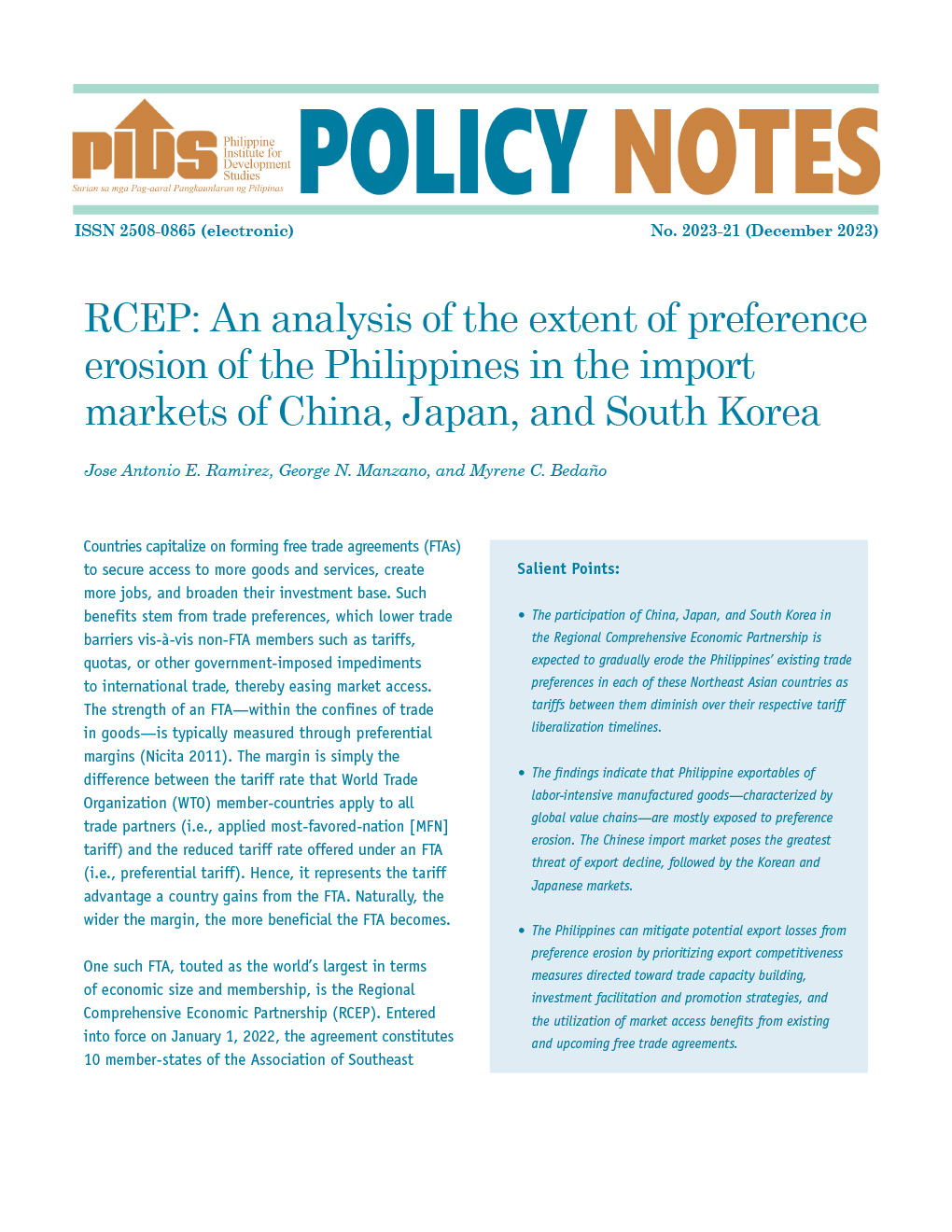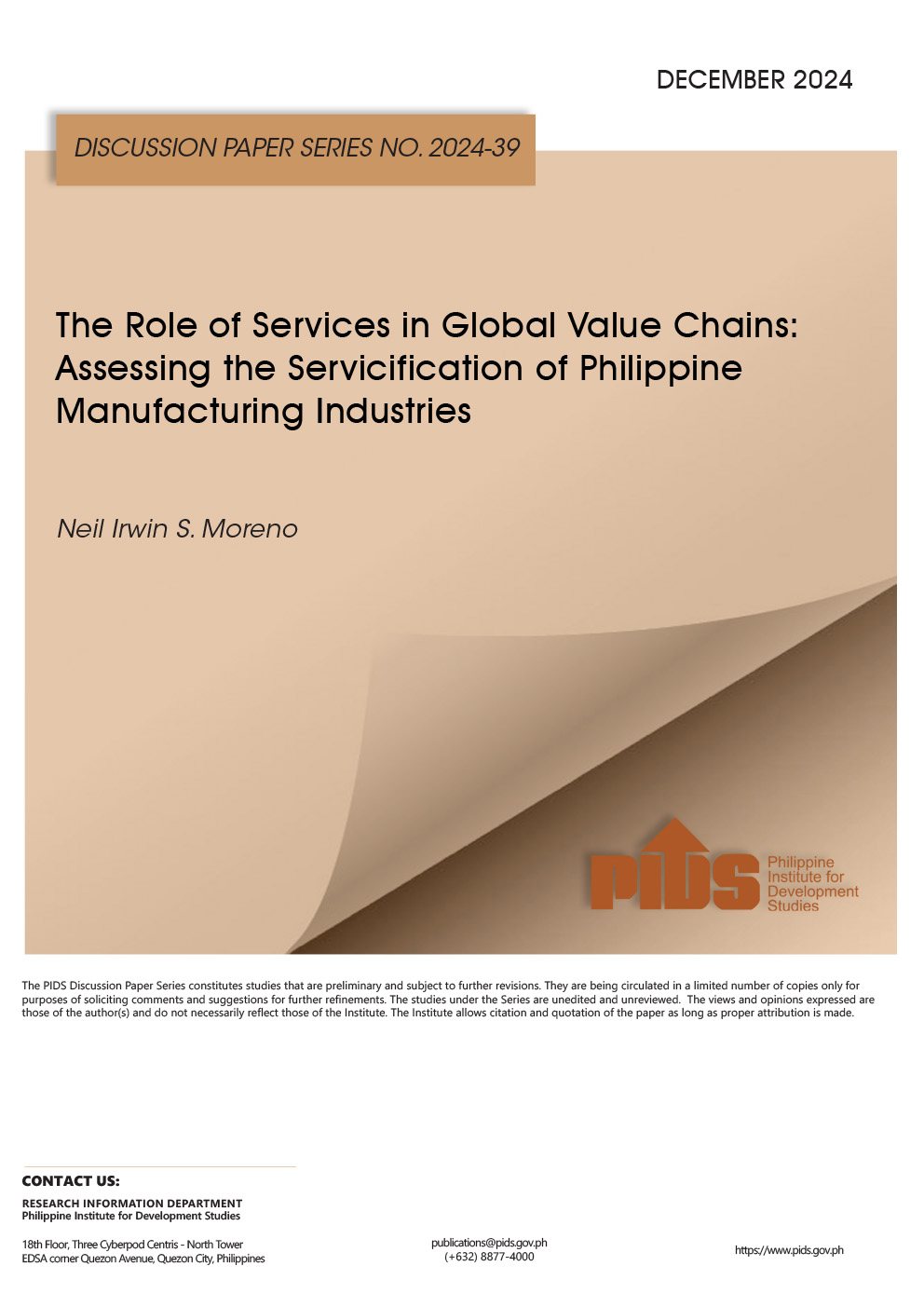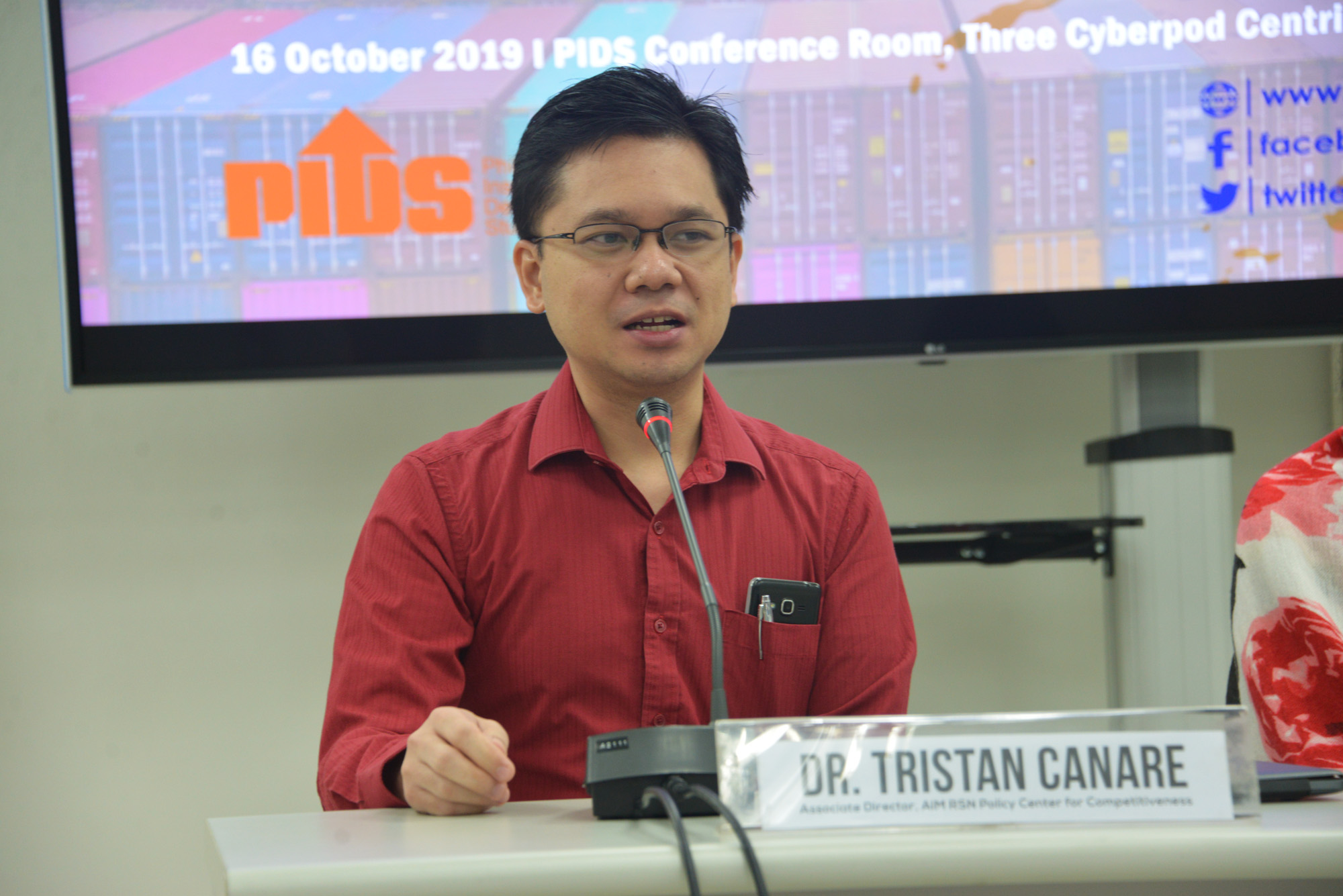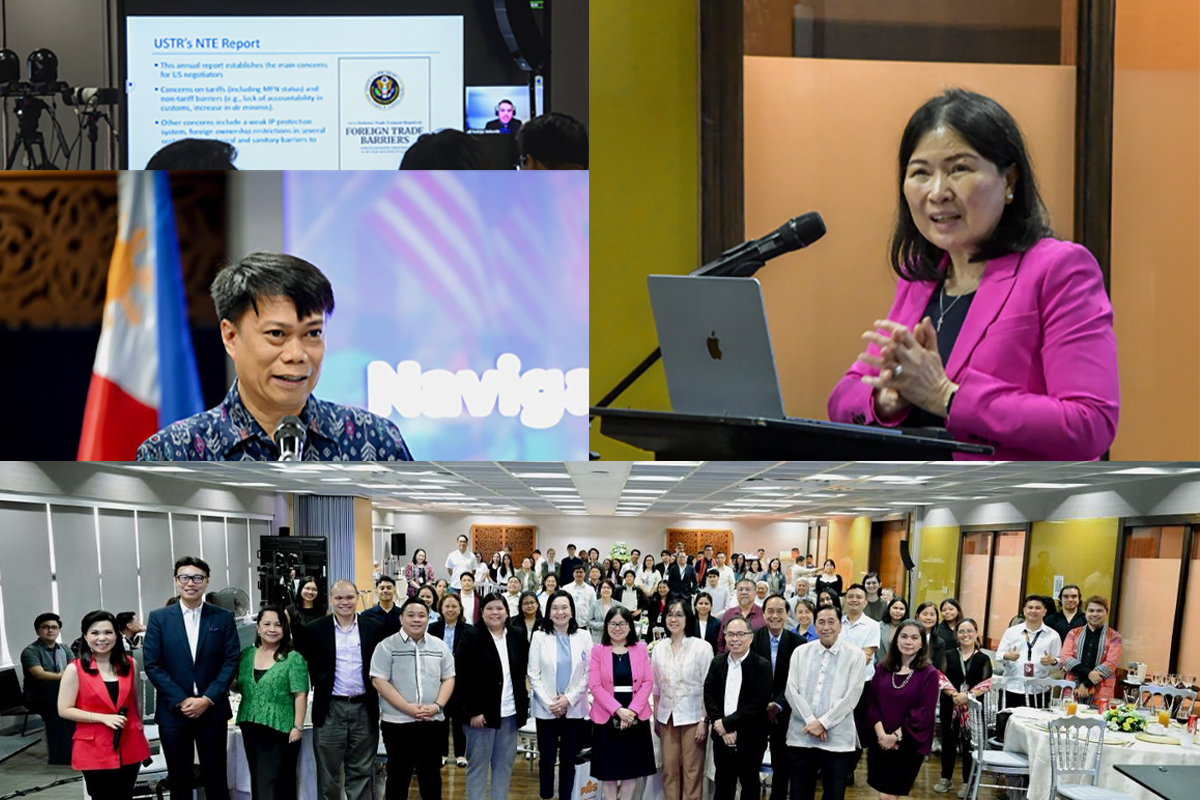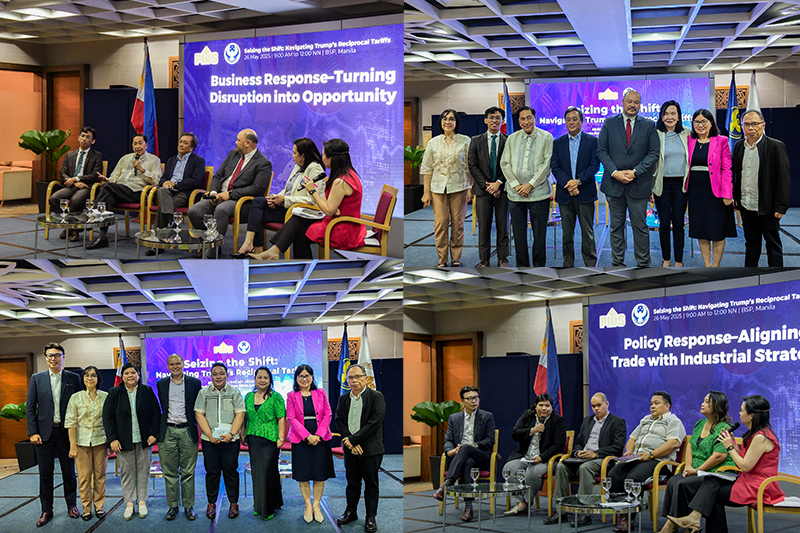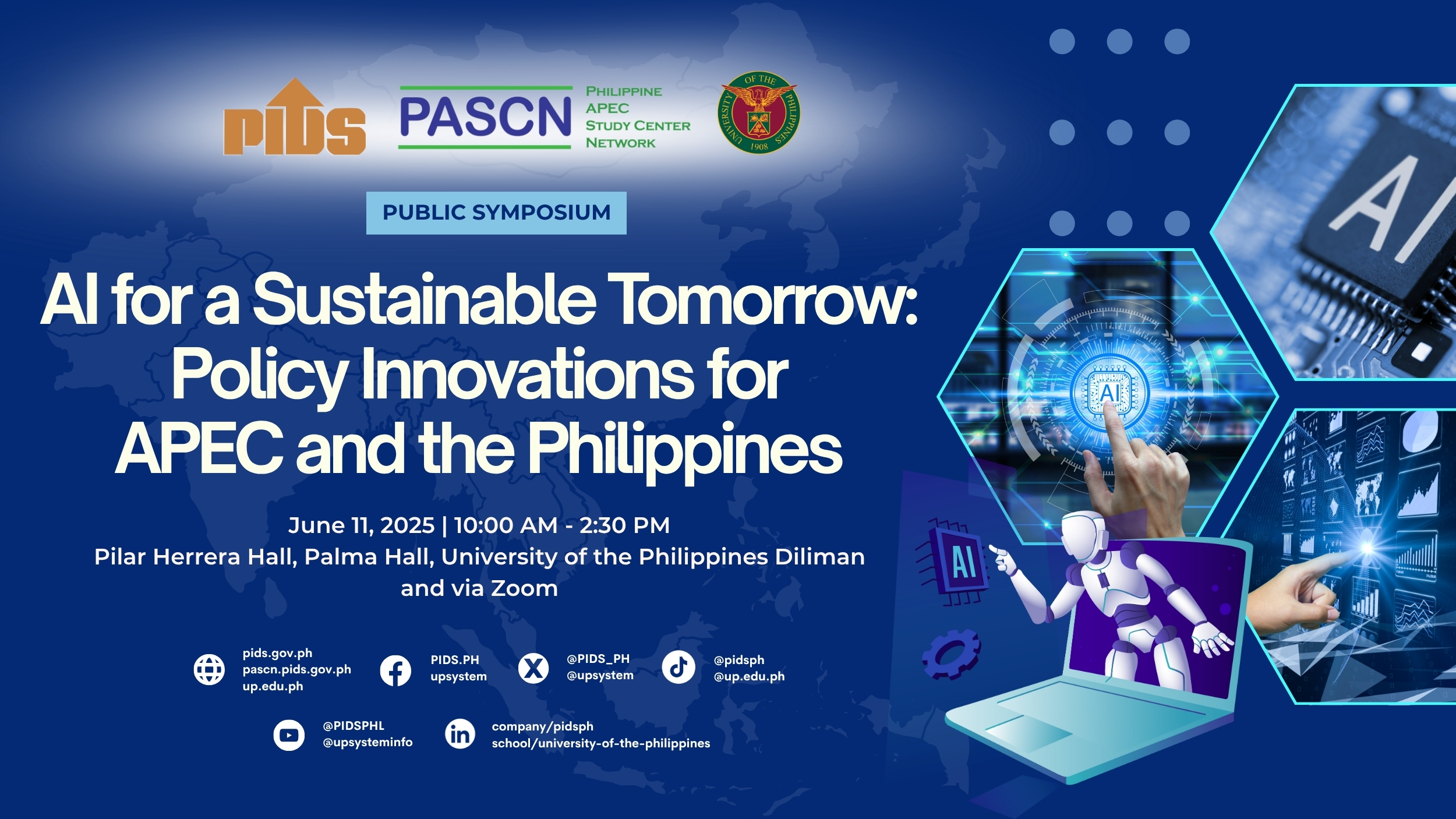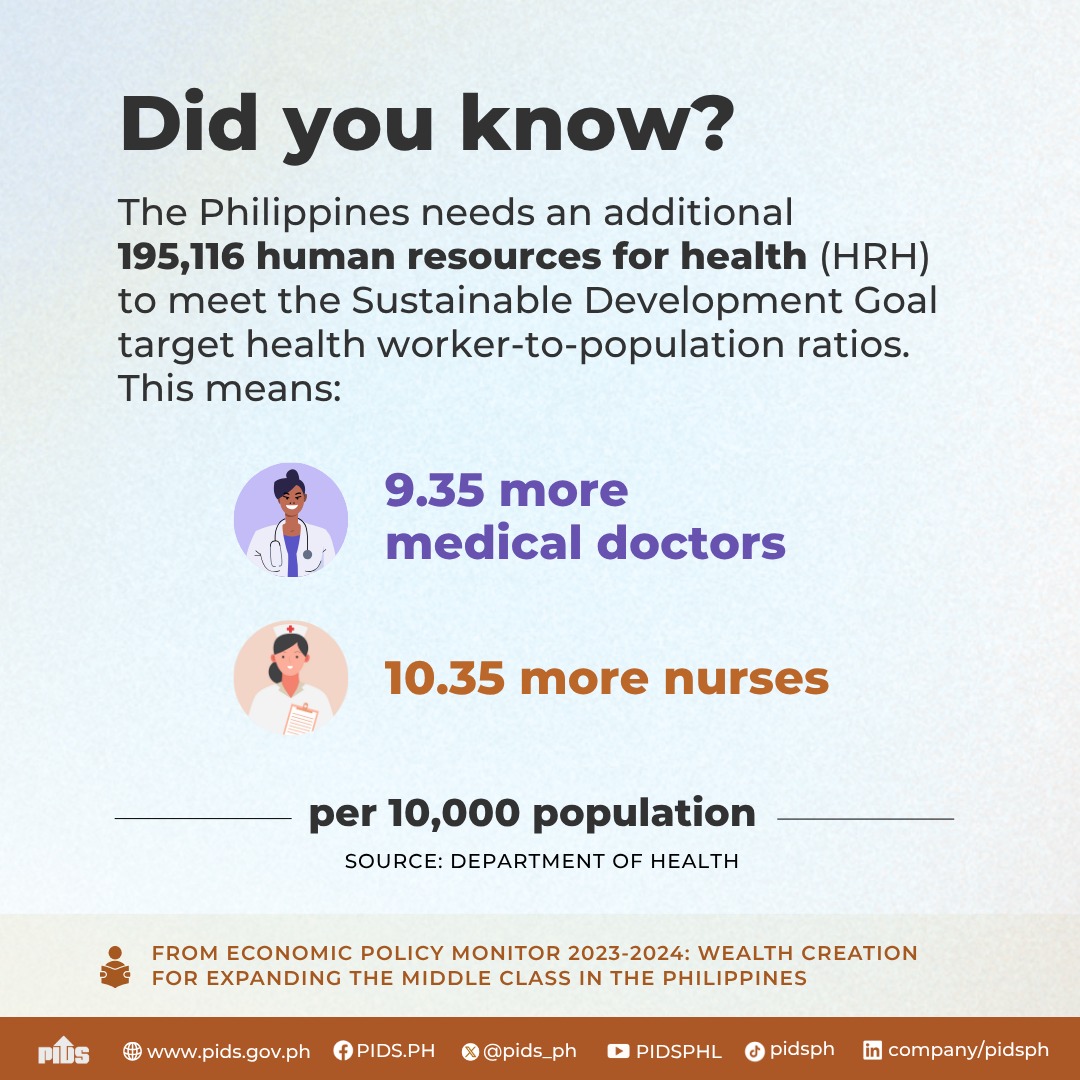Amid the evolving US-China tariff realignment and the broader restructuring of global value chains, this paper evaluates the vulnerability and strategic positioning of the Philippines alongside four other ASEAN economies—Indonesia, Malaysia, Thailand, and Vietnam. For the ASEAN-5, the key challenge lies in minimizing exposure to import flooding from displaced Chinese goods and potential exclusion from global value chains if competitiveness falters, while also capitalizing on trade and investment diversion opportunities.
Using a Tariff Exposure Composite Index (TECI), the assessment reveals that the Philippines and Malaysia fall within the moderate-to-low risk tier, owing to relatively low reciprocal tariff rates and strong exemption coverage—particularly for high-value electronics. Indonesia is classified as moderate risk but is more vulnerable due to limited exemption coverage and a dependence on low-tech, commoditized exports. Meanwhile, Vietnam and Thailand are in the high-risk tier, driven by steep tariffs, significant US export dependence, and only moderate levels of tariff exemption.
Absent a coordinated and forward-looking policy response, the Philippines and its ASEAN neighbors risk becoming passive bystanders in an increasingly fragmented trade landscape. However, with strategic alignment of trade and industrial policy, the deployment of robust trade defense tools, and deeper ASEAN collaboration, these economies can reframe the current disruption as a platform to reposition themselves as high-trust, tariff-resilient production hubs in the new global trading order.
Comments on this paper are welcome within 60 days from the date of posting. Email publications@pids.gov.ph.
Citations
This publication has been cited 19 times
- Andrea E. San Juan . 2025. PHL’s focus should be chip exports’ intrinsic value: Seipi. BusinessMirror .
- Andrea E. San Juan . 2025. To leverage tariff edge, PHL needs better logistics, labor. BusinessMirror .
- Angela Celis . 2025. PH risks missing trade advantage without quick policy response — PIDS. Malaya Business Insight.
- Ateneo de Manila . 2025. Forum on “Trade Wars and the Evolving Post-Globalization International Trading Order” highlights urgent policy shifts and regional opportunities. Ateneo de Manila .
- JC Punongbayan . 2025. [In This Economy] Trump’s tariffs and Marcos’ radio silence. Rappler.
- Kris Crismundo . 2025. PH confident to find mutually beneficial tariff arrangements with US. Philippine News Agency .
- Luisa Maria Jacinta C. Jocson . 2025. Lower US tariff rate can create niche export openings for Philippines. BusinessWorld.
- Luna Salamat . 2025. PH eyes win-win deal with US amid new tariff policy. The Daily Chronicle.
- Manila Times . 2025. Tariffs to benefit PH but readiness lacking. Manila Times .
- Marianne Go . 2025. Philippine industrial policy needs to change. Philippine Star .
- Philippine News Agency . 2025. Reforms needed for PH to benefit from Trump tariffs –study. Philippine News Agency .
- Philippine News Agency . 2025. Reforms needed for PH to benefit from Trump tariffs – study. Sunstar.
- Reuters. 2025. PH stands to benefit from US tariff shake-up, but must address constraints, study shows. GMA News.
- Reuters. 2025. Philippines ‘strategically positioned to benefit’ from Trump’s tariff overhaul, study shows. SCMP.
- Reuters . 2025. Philippines stands to benefit from US tariff shake-up, but must address constraints, study shows. Reuters .
- Reuters . 2025. Philippines stands to benefit from US tariff shake-up, but must address constraints, study shows. BusinessWorld.
- Reuters News Agency . 2025. Phl Stands To Benefit From US Tariff Shake-Up, But Must Address Constraints, Study Shows. One News.
- Tatiana Maligro. 2025. Philippines can benefit from Trump tariffs with the help of reforms — PIDS study. Rappler.
- The Philippine Star . 2025. PIDS: Phl to benefit from US tariff shake-up. Philippine Star .

